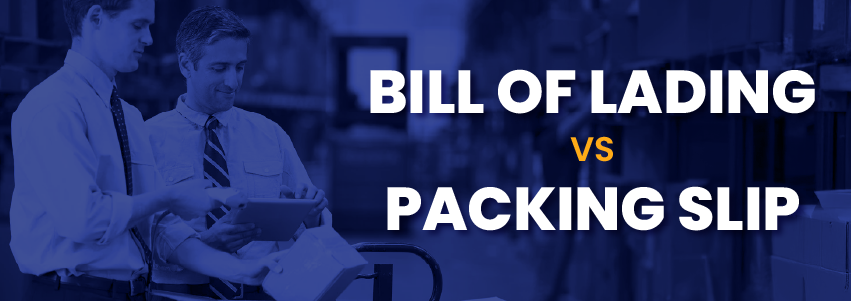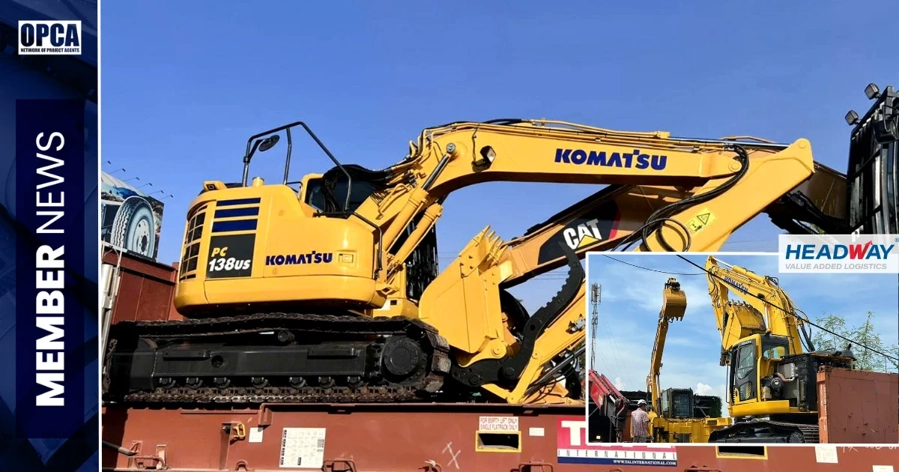Bill of Lading Vs. Packing Slip: Understanding the Differences
The process of global trade depends equally on paperwork as it does on the physical cargo being transported. The various documents in international trade operate independently to track shipments from origin to destination. The bill of lading vs packing slip represent two essential shipping documents which frequently cause confusion among traders.
The correct identification of bill of lading and packing slip documents remains vital for exporters and importers and freight forwarders because it prevents compliance problems and delivery holdups and financial disagreements.
What is Bill of Lading?
A legally binding agreement between the shipper and the carrier is called a bill of lading, or B/L for short. It explains the terms of delivery and shows that the items have been picked up for shipping.
The bill of lading has three main functions:
- Receipt of Goods: It confirms that the carrier has received the cargo in good condition.
- Document of Title: It acts as proof of ownership of the cargo. Whoever holds the original bill of lading has the right to claim the goods.
- Contract of Carriage: It sets the terms and conditions of the shipment between the shipper and the carrier.
Types of bill of lading include:
- Straight Bill of Lading: Non-negotiable, goods are delivered to a specific consignee.
- Order Bill of Lading: Negotiable, goods can be transferred to another party.
- Seaway Bill: Used for quick releases without original document handling.
The bill of lading has a significant impact on international trade finance in addition to its logistics function. Insurers may request it when resolving claims, and banks frequently need it to issue letters of credit. It is one of the most crucial pieces of paperwork in international trade since customs officials use it to verify shipment information.
What is Packing Slip?
A packing slip is a business document that lists all the items that are in a shipment. It is not a formal document like the bill of lading; instead, it is a full list of all the items that the shipper sent to the consignee.
The main purpose of a packing slip is to let the person receiving the package or container know exactly what is inside. It makes sure that all requested products are delivered and that none are missing or damaged.
Key features of a packing slip include:
- Description of each item.
- Quantity of products shipped.
- SKU numbers or product codes.
- Weight and dimensions of packages.
The e-commerce industry along with traditional B2B shipping requires packing slips as an essential document. The packing slip serves as a verification tool which helps both parties check product accuracy during multiple item online orders and enables fast dispute resolution. For warehouse staff, it streamlines inventory management and reduces errors during the receiving process.
Unlike a bill of lading, a packing slip does not serve as proof of ownership or a contract of carriage. Instead, it is mainly for operational and customer service purposes, ensuring transparency between seller and buyer.
Bill of Lading vs. Packing Slip
Although these two documents travel with the same shipment, they differ significantly in function and importance.
- Legal Status: The bill of lading is a legal document, while the packing slip is not.
- Purpose: The bill of lading is used for carriage and ownership, while the packing slip is used for inventory and verification.
- Recipients: The bill of lading is used by carriers, banks, and customs authorities, while the packing slip is primarily used by the consignee or warehouse staff.
- Details: The bill of lading contains shipping routes, freight charges, and contract terms, whereas the packing slip only lists the items shipped.
The absence of either document or incorrect preparation of these documents will generate various problems. The absence of a proper bill of lading leads to port delays because goods will stay there until all disputes are settled. The recipient needs a packing slip to verify all received items which causes delays in distribution and inventory management.
The correct use of both documents in supply chain operations enables companies to maintain smooth operations. The bill of lading helps businesses follow regulations but the packing slip provides clear documentation of contents. The combination of these documents safeguards all participants who take part in worldwide trading activities.
The difference between bill of lading and packing slip documentation helps businesses minimize the chances of delivery conflicts and customs problems and trading partner misunderstandings. The correct implementation of these documents creates an efficient and trustworthy system for global supply chain management.
OPCA Members Ensuring Document Accuracy
The preparation of accurate documentation in international trade requires equal importance to efficient logistics operations. The Overseas Project Cargo Association (OPCA) members who handle complex cargo movements make it their duty to properly create and apply the bill of lading and packing slip documents.
The incorrect use of documents leads to customs delays and results in penalties and possible product confiscation. The global freight forwarding expertise of OPCA members enables them to assist shippers and consignees in creating documents that follow international trade regulations while being complete and consistent.
Project cargo and oversized shipments require OPCA members to handle complex operations because they involve multiple stakeholders and strict regulations and multimodal transportation methods. The proper issuance of bills of lading and detailed packing slips becomes essential for preventing delivery delays in these situations.
OPCA members possess expertise in document coordination with customs agencies and port authorities and financial institutions to verify international standards compliance. The expertise of OPCA members protects businesses from expensive errors while maintaining continuous cargo movement.
Companies that work with OPCA professionals obtain access to dependable partners who provide complete documentation support for every shipment throughout its entire process. OPCA members unite logistics operations with proper documentation to deliver secure and reliable global trade services for all types of cargo including heavy-lift equipment and specialized equipment and containerized goods.
_logo.webp)



